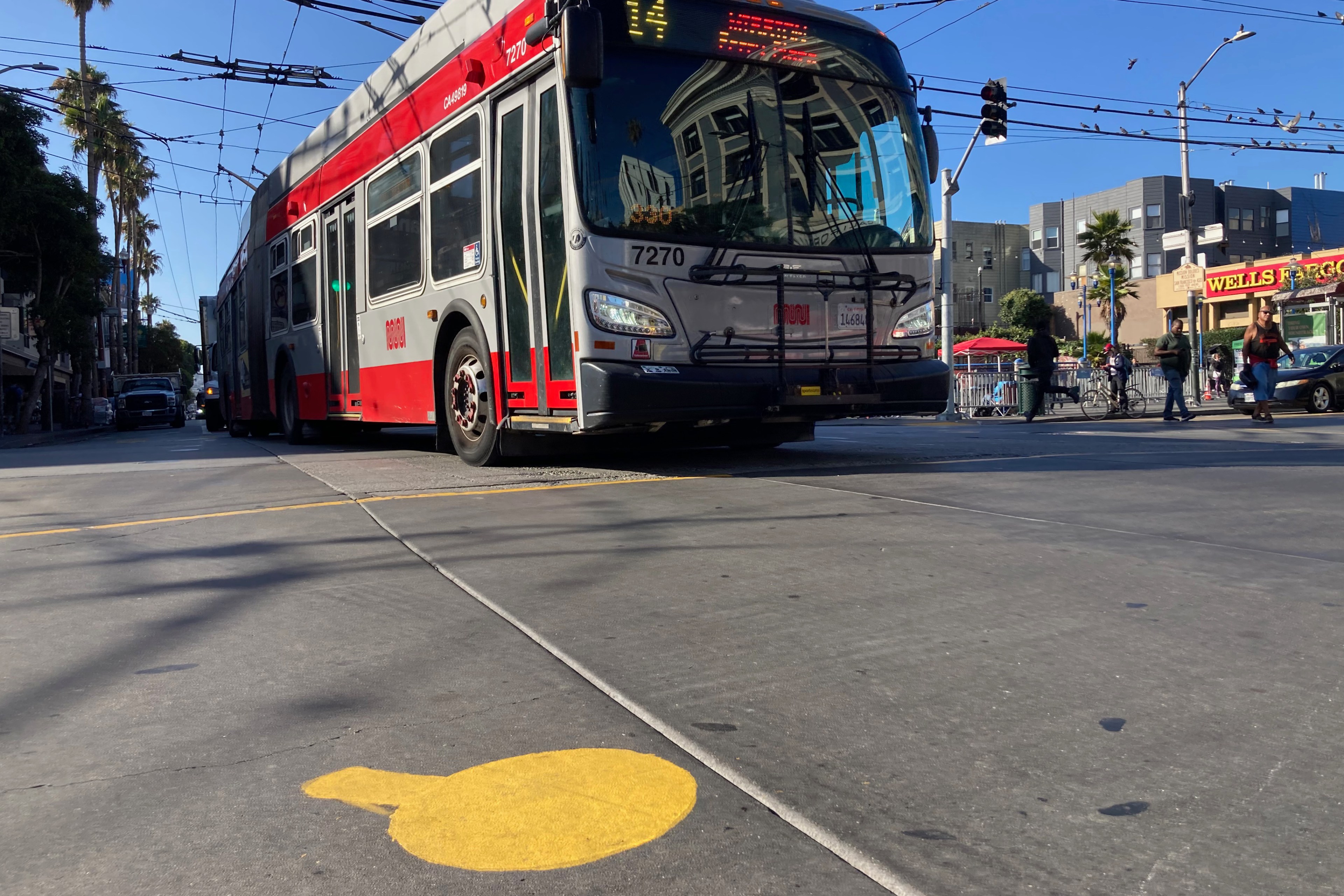The Standard’s Astrid Kane answers a reader question submitted to Ask The Standard: What are those yellow painted dots in the middle of some San Francisco streets?
You’ve likely seen them all over town: those yellow circles painted at seemingly random locations in the middle of the street. Some of them are ordinary circles, others have a little notch or arm poking out, while still others have an unpainted section across their middle, looking like the top of a flathead screw. They’re roughly the same goldenrod hue as a school bus.
But what are they?
It turns out these dots are the San Francisco Municipal Transportation Agency’s own version of hieroglyphics, an easy-to-decode system to help bus and streetcar operators navigate electric vehicles around the city’s traffic- and obstacle-clogged streets.
Basically, the type of circle refers to the size of the bus. For instance, the one that looks like a flat-top screw is for standard 60-foot trolley coaches, which are different from the diesel-powered motor coaches. And the little arm or notch indicates the direction of travel.
But they also perform a much more specific function to keep the whole system moving smoothly.
According to agency spokesperson Stephen Chun, the circles help drivers time their acceleration properly as buses pass through the “breakers” that connect different sections of wire.
That’s what generates the telltale snap in the wire tension, a sound that longtime San Francisco residents will tell you means only one thing: The bus is almost there.
The dots themselves are placed at the points where the front of the bus is about to hit the switch or crossing. And those switches, Chun added, are activated by a turn signal on the bus.
Driving a bus is complicated! Bus drivers look in all three dimensions—not just left and right—to know they’re moving safely.
Beyond its long history of amusing bus ads, some of Muni’s infrastructure has charming, old-school names. For example, the antenna-like device protruding from the tops of a streetcar is known as a “pantograph.”
So it’s no surprise that Muni operators have their own nicknames for the yellow circles, including tadpoles, frying pans, hamburgers and pancakes. One good spot to see for yourself is the intersection of 16th and Bryant streets in the Mission District, where any number of symbols can be found.
